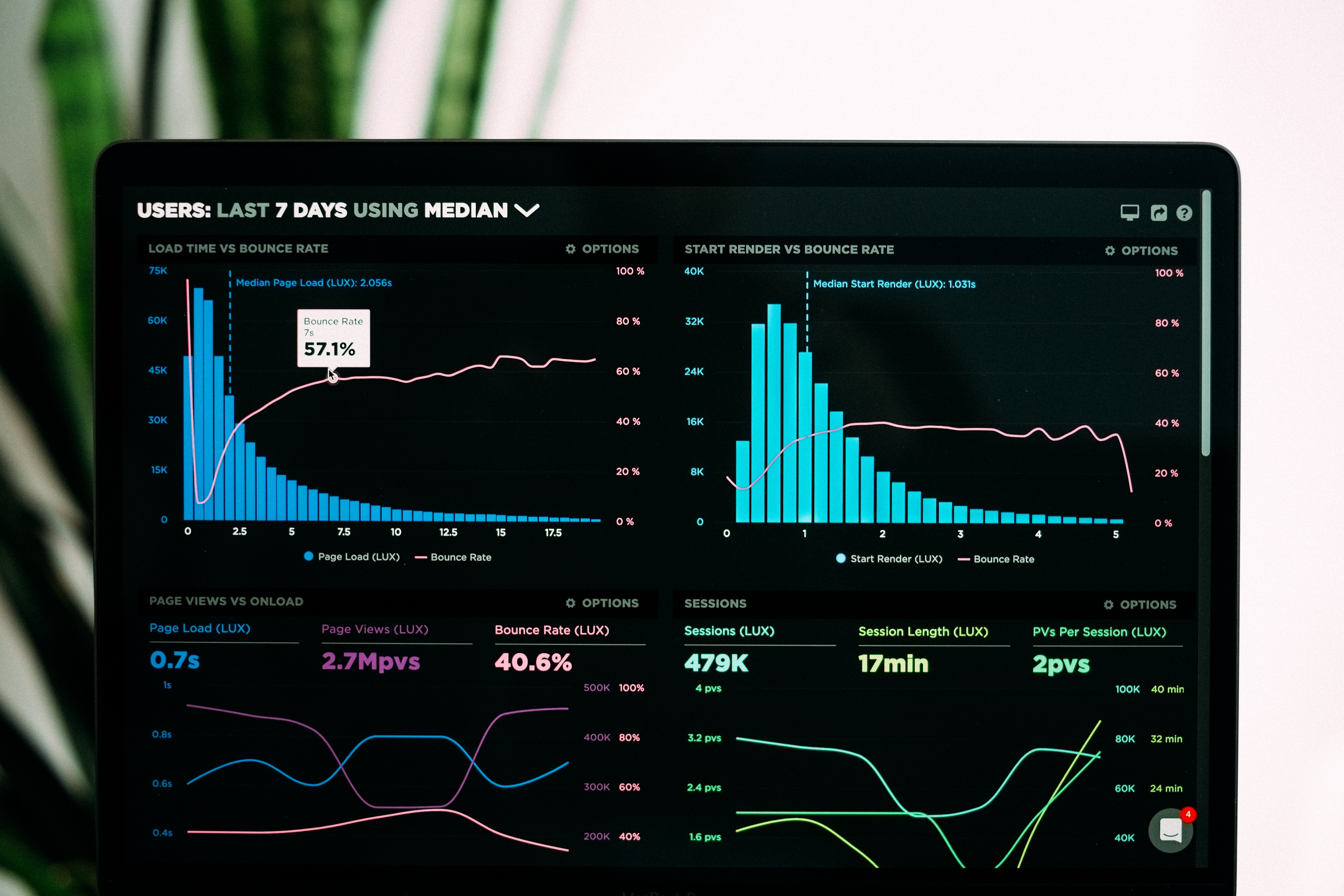5 SEO Hack in Framer
5 SEO Hack in Framer
Oct 3, 2024
Said Aidogdu
5 SEO Hacks in Framer: Everything You Need to Know
In the ever-evolving landscape of digital marketing, optimizing your website for search engines is paramount. With the rise of user-friendly website builders like Framer, users can create visually stunning sites while also focusing on search engine optimization (SEO). This article will explore five key SEO hacks that can help you elevate your Framer website's performance. Whether you're a designer, a marketer, or a business owner, these strategies will enhance your site's visibility and user experience.
What are the Best SEO Hacks for Framer Sites?
How to Optimize Your Framer Website for Search Engines?
To optimize your Framer website for search engines, start by focusing on several foundational aspects. First, ensure that your domain name is relevant and concise, which aids both user recall and search engine crawling. Utilize Framer’s built-in SEO tools to adjust meta tags, titles, and descriptions effectively. These elements are crucial, as they tell search engines what your page is about. Additionally, aim to create a clean URL structure that includes targeted keywords, which can improve your site's ranking. Regularly upload original content that engages users and encourages them to spend more time on your site, thus reducing bounce rates and boosting SEO.
What Built-in SEO Tools Does Framer Offer?
Framer offers a variety of built-in SEO tools that streamline the optimization process. Users can easily edit title tags and meta descriptions directly from the interface, ensuring that each page is optimized for search engines. The platform also allows you to generate sitemaps automatically, which are essential for helping search engines crawl your pages more efficiently. Furthermore, Framer’s modal settings enable users to customize how overlays appear, ensuring that they do not hinder the user experience, a crucial factor for SEO. Leveraging these tools effectively can significantly improve your Framer website's visibility on search engines.
How Can You Use Templates for SEO in Framer?
Using templates in Framer can offer a head start in optimizing your site for SEO. Framer provides a selection of responsive templates that are designed with user experience and SEO in mind. When selecting a template, look for one that allows you to customize SEO elements easily, such as image alt texts, header tags, and internal linking structures. By utilizing these templates, you can ensure that your Framer site is built on a solid SEO foundation while also being visually appealing. Remember to customize the template to reflect your brand and target keywords, enhancing your chances of ranking higher on search engines.
Framer vs Webflow: Which is Better for SEO?
SEO Capabilities of Framer Compared to Webflow
When comparing Framer vs Webflow in terms of SEO capabilities, it’s essential to consider the specific features each platform offers. Webflow is known for its extensive customization options, allowing designers to manipulate elements that can impact SEO. However, Framer provides a more user-friendly approach, making it easier for non-technical users to optimize their sites. Both platforms allow for custom meta tags and SEO settings, but Framer’s intuitive interface may be more appealing for those who prioritize ease of use over extensive technical capabilities.
Interface Differences Impacting SEO Performance
The interface differences between Framer and Webflow significantly impact how users manage their SEO strategies. Framer’s interface is designed to be straightforward, allowing users to navigate through SEO tasks without extensive training. This user-friendly approach can lead to quicker implementation of SEO best practices, as users can focus on content and design rather than getting bogged down by complex settings. In contrast, Webflow may require a steeper learning curve, which could hinder the SEO optimization process for less experienced users.
How to Choose the Right Website Builder for SEO?
Choosing the right website builder for SEO depends on your specific needs and technical expertise. If you’re looking for a platform that combines ease of use with solid SEO capabilities, Framer might be your best option. It allows you to optimize your Framer website without the necessity of extensive coding knowledge. Alternatively, if you are a pro designer seeking advanced SEO configurations and have the technical skills to back it up, Webflow could provide the flexibility you need. Ultimately, consider your user experience and how quickly you want to implement SEO changes when selecting your website builder.
How to Use Technical SEO in Framer?
What Technical SEO Practices Should You Implement?
Implementing technical SEO practices in Framer is crucial for ensuring that your website is easily crawled and indexed by search engines. Start by optimizing your site’s loading speed. A faster site improves user experience and can positively impact your rankings. Use tools to analyze your site’s performance and identify areas for improvement. Additionally, ensure that your images are compressed and appropriately tagged with alt text. Framer allows you to customize these elements, making it easier to follow technical SEO best practices.
How to Structure Your Framer Site for Better SEO?
The structure of your Framer site plays a critical role in its SEO performance. Organizing your content with a clear hierarchy using header tags (H1, H2, H3) helps search engines understand the importance of various sections. Create a logical navigation structure that allows users to find information easily. Use internal linking to connect related content, enhancing both user experience and the crawlability of your site. Framer’s design capabilities ensure that you can implement this structure visually while adhering to SEO best practices.
Can Framer Handle Technical SEO Efficiently?
Framer can handle technical SEO efficiently, allowing users to implement essential practices without extensive knowledge of coding. The platform is built with modern web standards in mind, which inherently supports good technical SEO. Features like responsive design, customizable meta tags, and built-in sitemap generation ensure that your Framer website is optimized for search engines. By leveraging these capabilities, you can create a site that not only looks good but also performs well on search engine results pages.
Using Framer for Effective Keyword Optimization
How to Identify the Right Keywords for Your Framer Website?
Identifying the right keywords for your Framer website is fundamental to your SEO success. Start by conducting keyword research using tools that analyze search volume and competition for specific terms. Focus on long-tail keywords that are relevant to your niche and have lower competition. These keywords often convert better as they target users looking for specific solutions. Once you have a list of keywords, you can strategically integrate them into your Framer site’s content, meta tags, and headers.
Best Practices for Integrating Keywords in Framer
Integrating keywords into your Framer website requires a balanced approach. Avoid keyword stuffing, as search engines penalize this practice. Instead, focus on naturally incorporating keywords into your content, ensuring that it remains readable and engaging for users. Use keywords in strategic locations, such as the title, headings, and throughout the body of your text. Framer’s interface allows you to easily make these adjustments, ensuring that your content remains optimized for both users and search engines.
How to Monitor Keyword Performance in Framer?
Monitoring keyword performance in Framer involves utilizing analytics tools to track how well your site ranks for targeted keywords. Google Analytics and Google Search Console are excellent resources for this purpose. They provide insights into keyword rankings, traffic sources, and user behavior on your site. By analyzing this data, you can identify which keywords are driving traffic and which may need adjustment or further optimization. Regularly reviewing your keyword performance will help you refine your SEO strategy and improve your Framer website's visibility.
Making SEO Easy with Framer's Intuitive Interface
How to Navigate Framer's Interface for SEO Tasks?
Navigating Framer's interface for SEO tasks is designed to be user-friendly, allowing even those with limited technical knowledge to manage their site effectively. The dashboard provides easy access to essential SEO settings, including meta tags, alt texts, and URL structures. Familiarize yourself with the layout to streamline your workflow when optimizing your site. This intuitive design can significantly reduce the time spent on SEO tasks, allowing you to focus more on content creation and user engagement.
What Features Make SEO Management Easy in Framer?
Framer offers several features that simplify SEO management for users. The ability to edit SEO elements directly from the design interface is a standout feature, as it allows for real-time adjustments. Additionally, Framer’s automatic sitemap generation ensures that your site remains crawlable by search engines without manual intervention. The platform also supports responsive design, which is crucial for mobile SEO. All these features contribute to making SEO management easy and efficient in Framer.
How to Create SEO-Friendly Content Using Framer?
Creating SEO-friendly content using Framer involves a strategic approach. Start by defining your target audience and understanding what they are searching for. Craft content that addresses their needs, utilizing the keywords you’ve identified. Framer’s design capabilities allow you to create visually appealing content that complements your written material. Use headings and subheadings to break up text, making it easier for users to read and for search engines to crawl. By focusing on both quality content and optimization, you can enhance your Framer site’s SEO effectively.


































